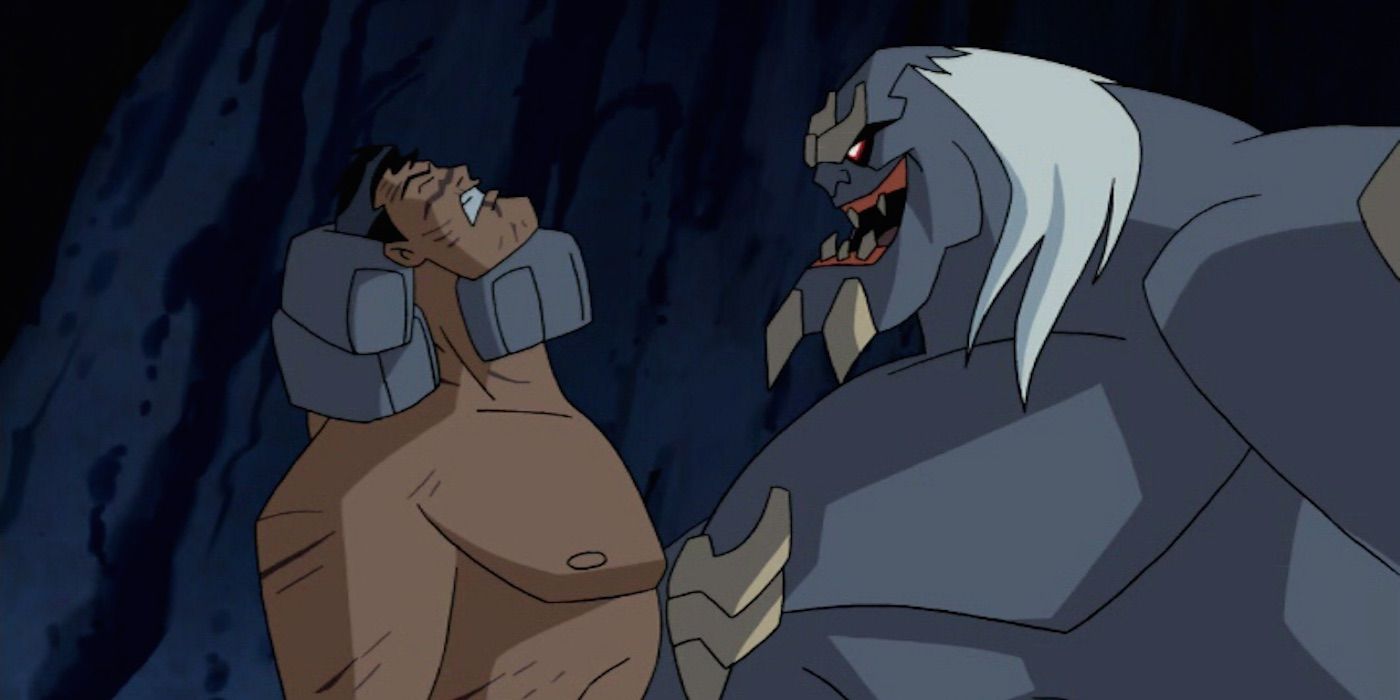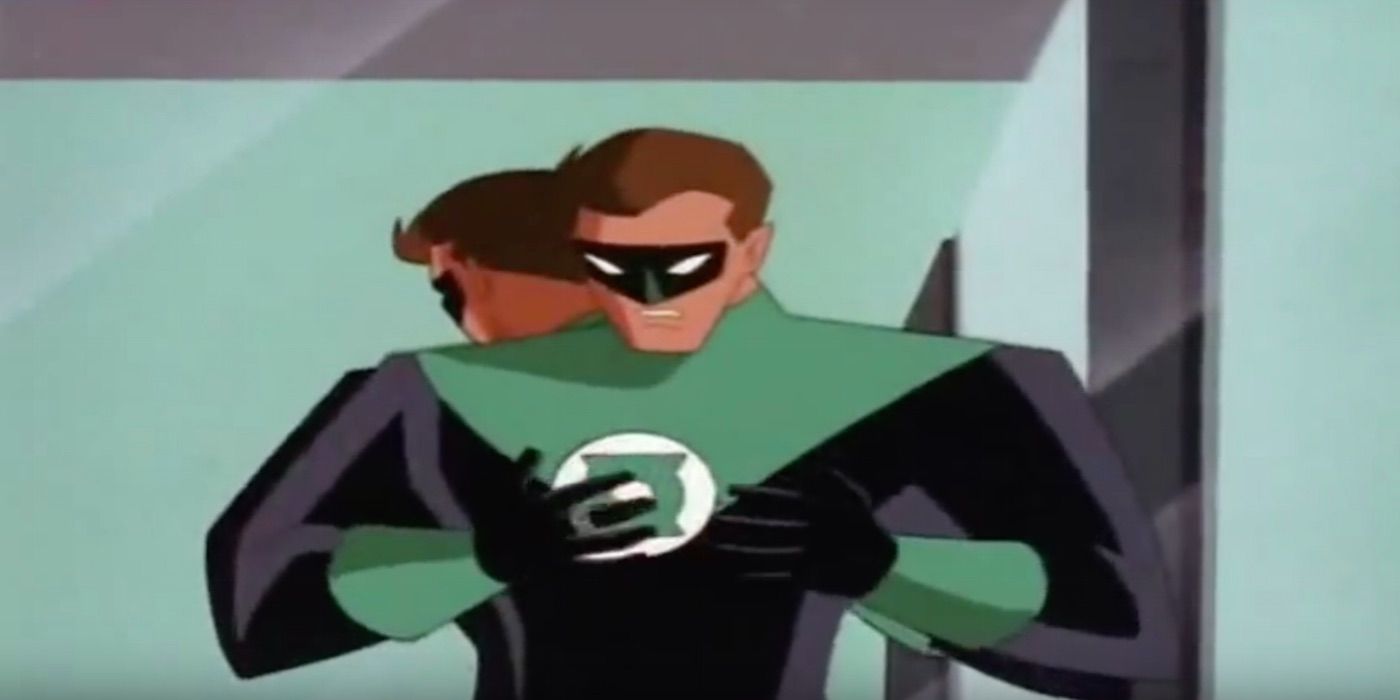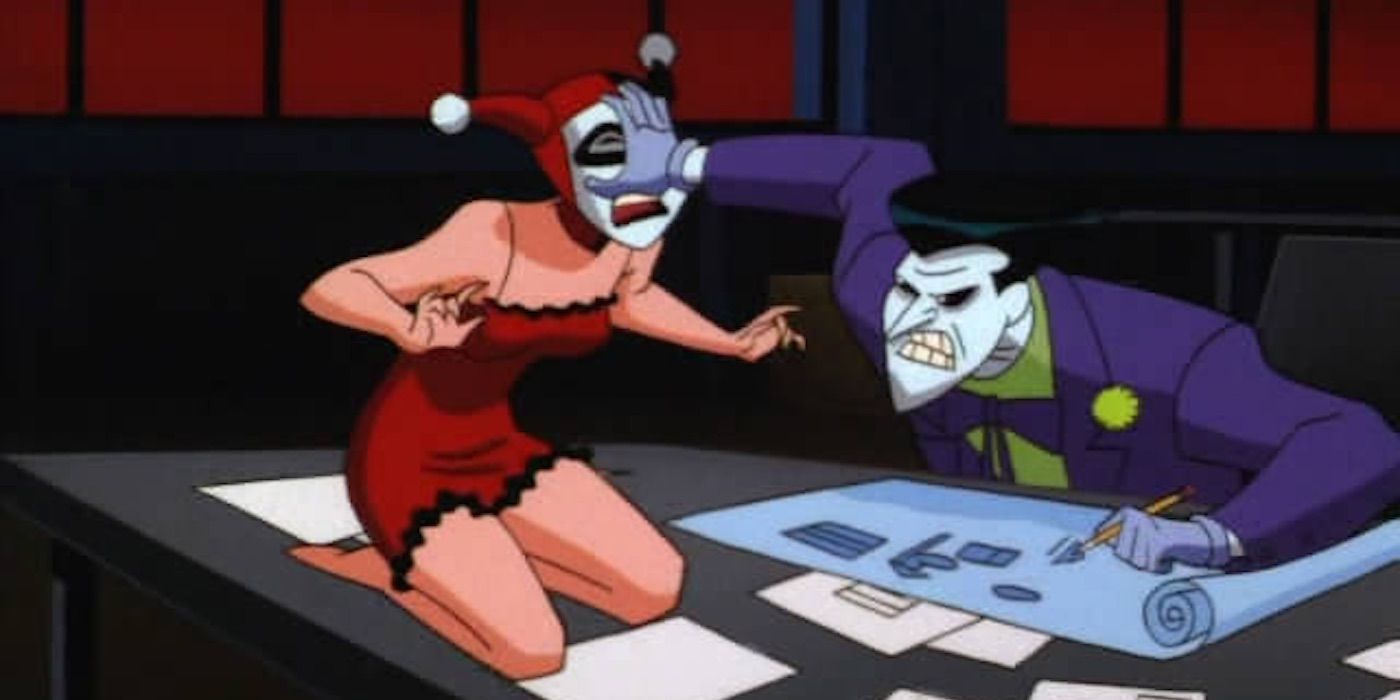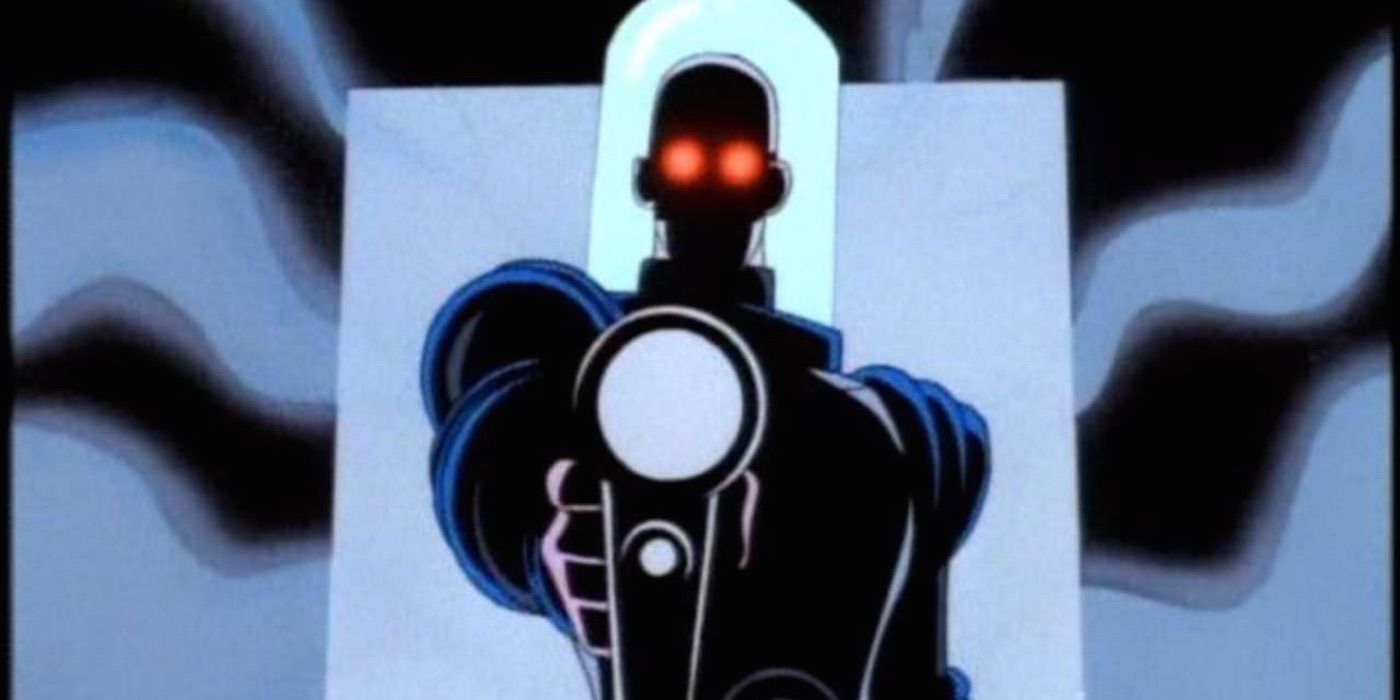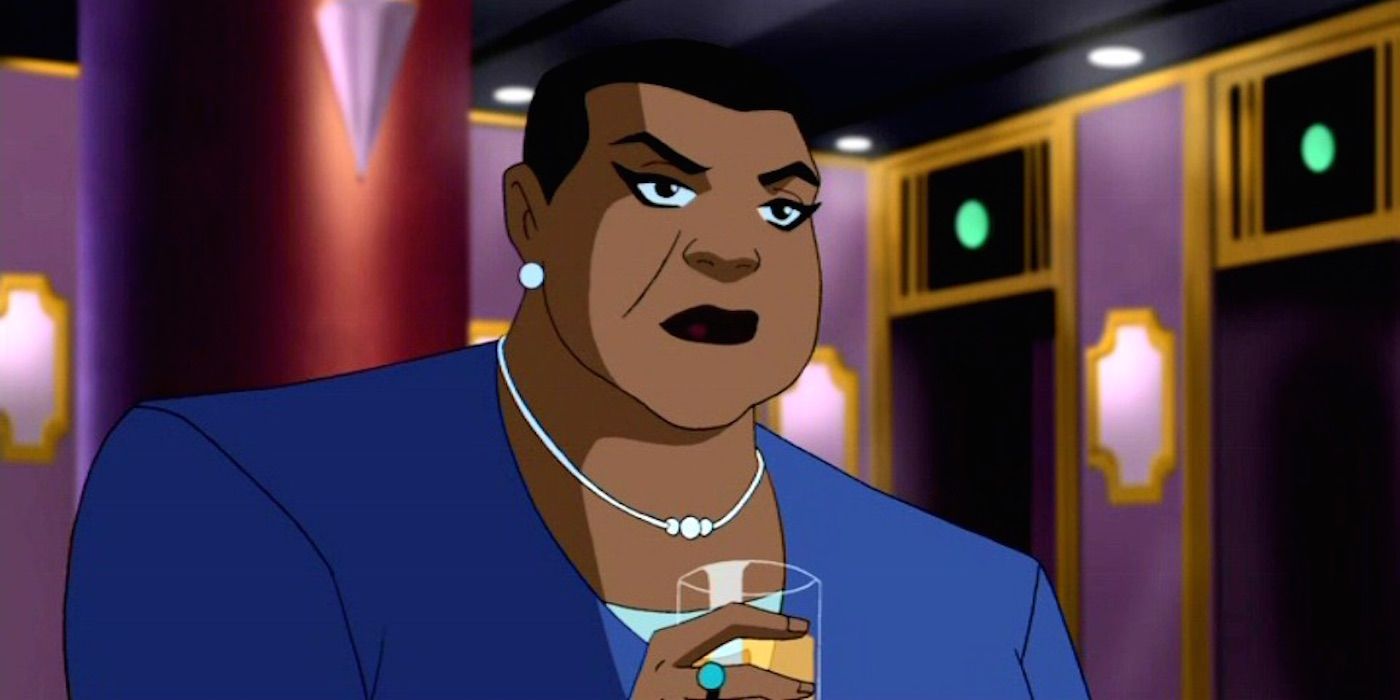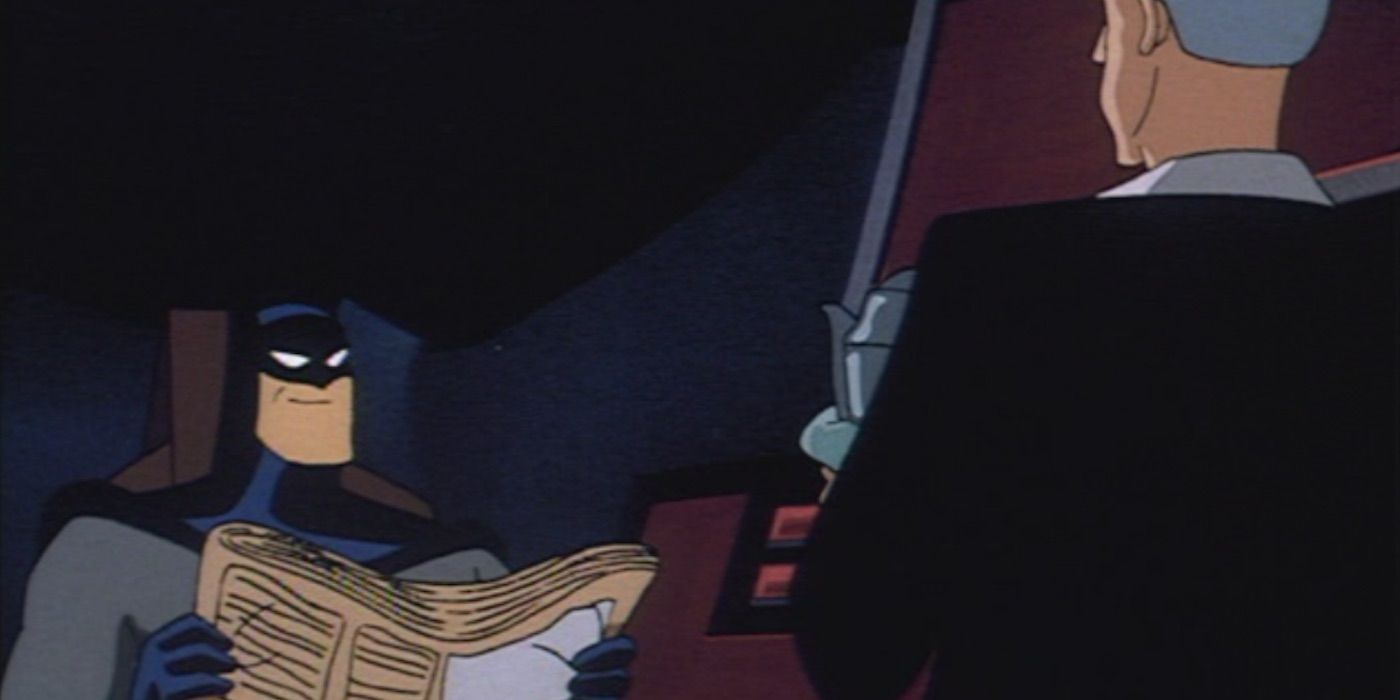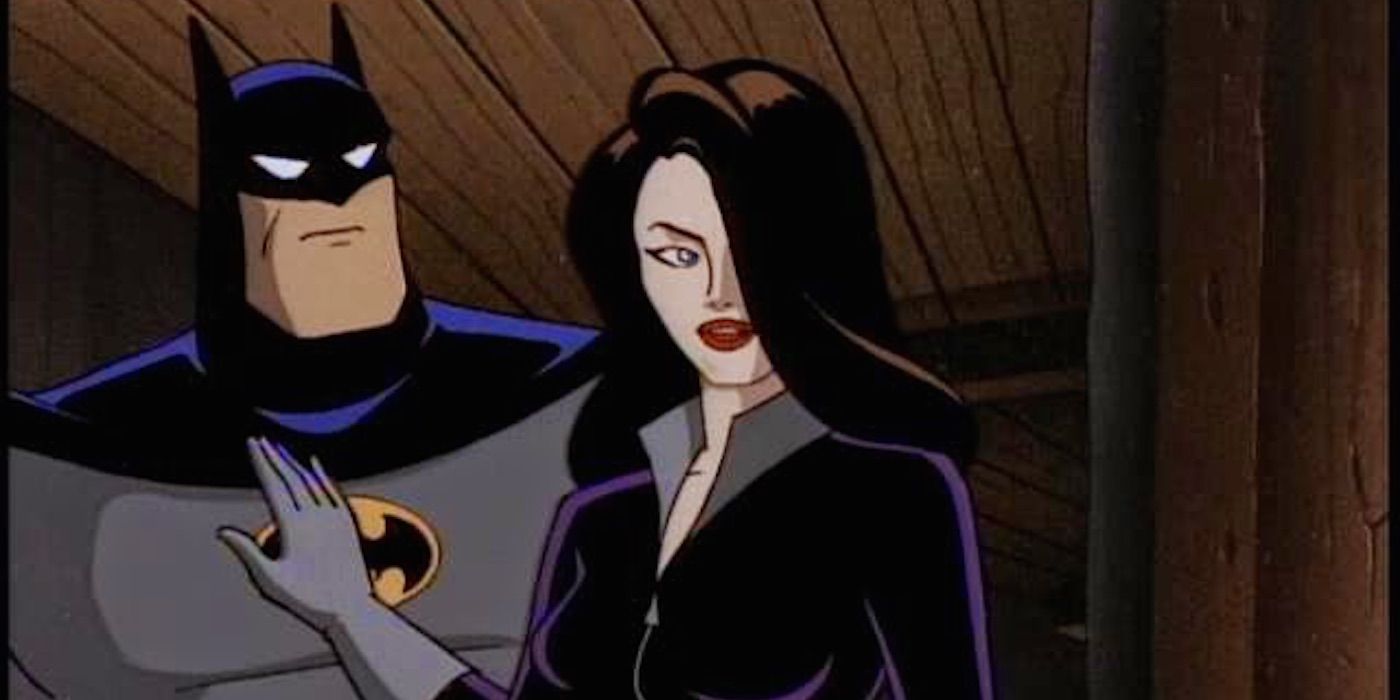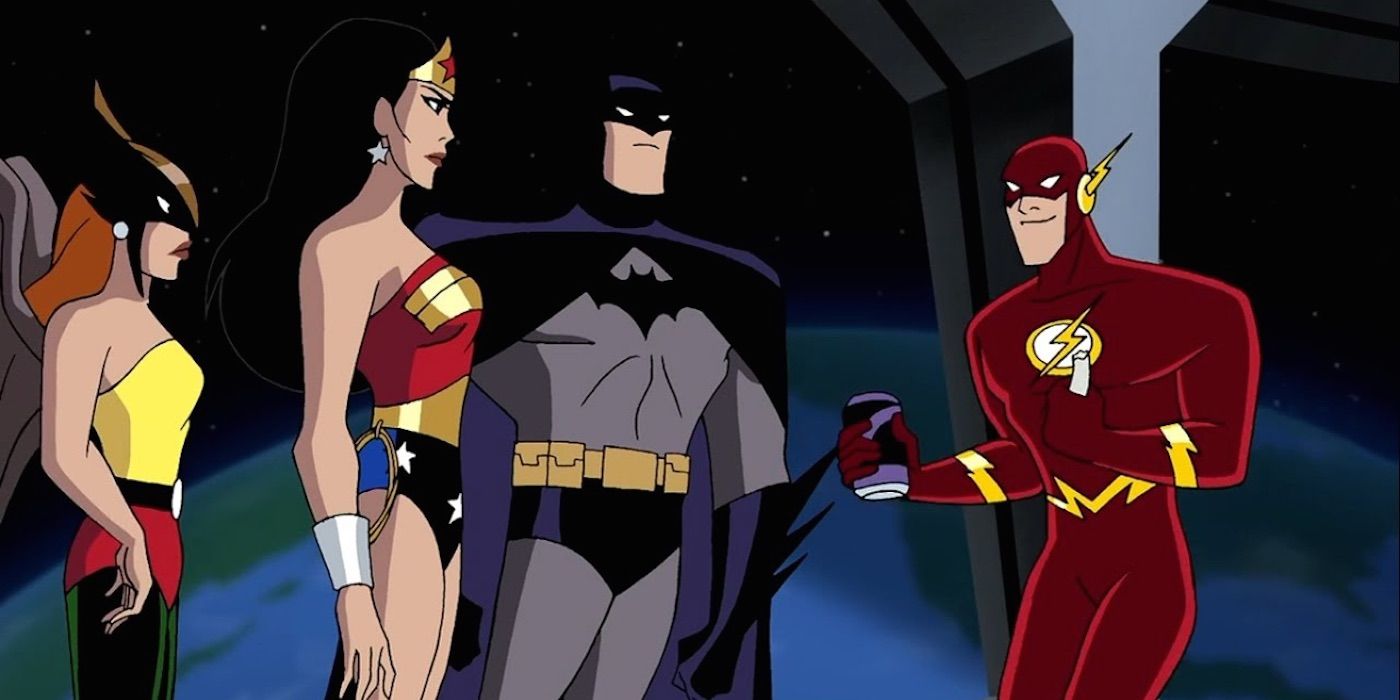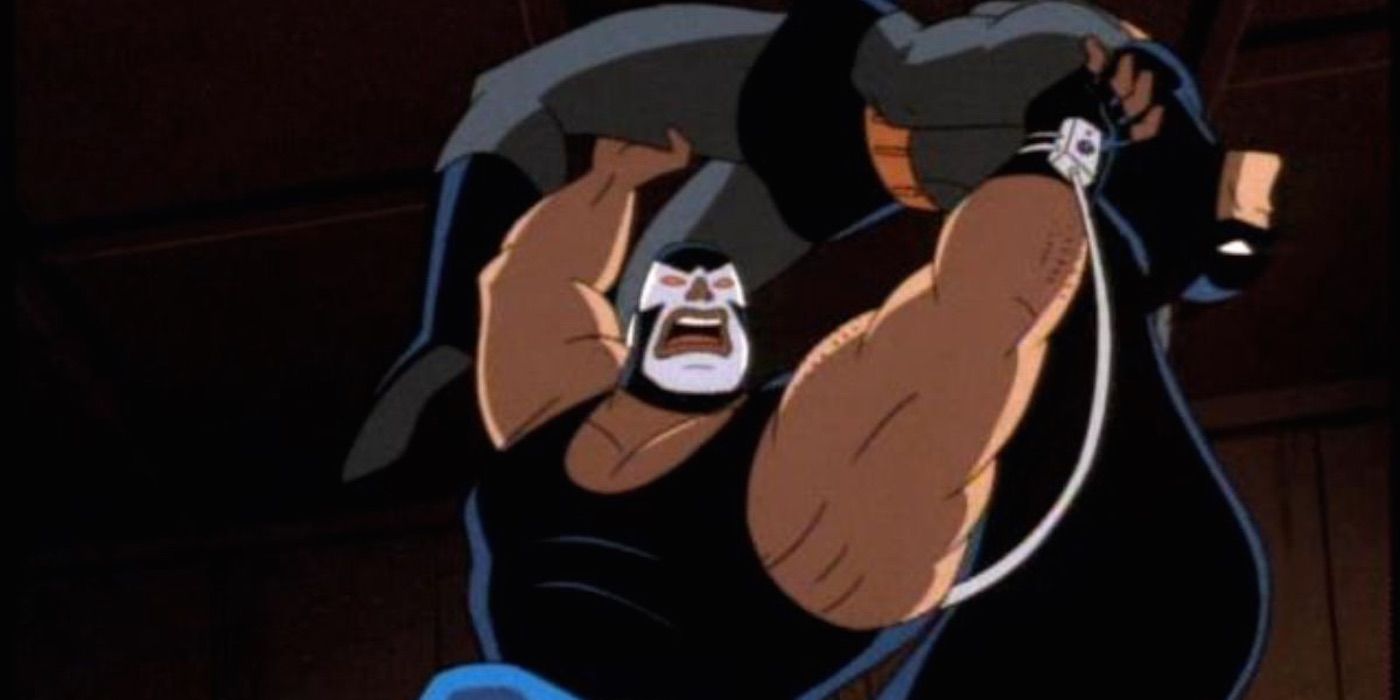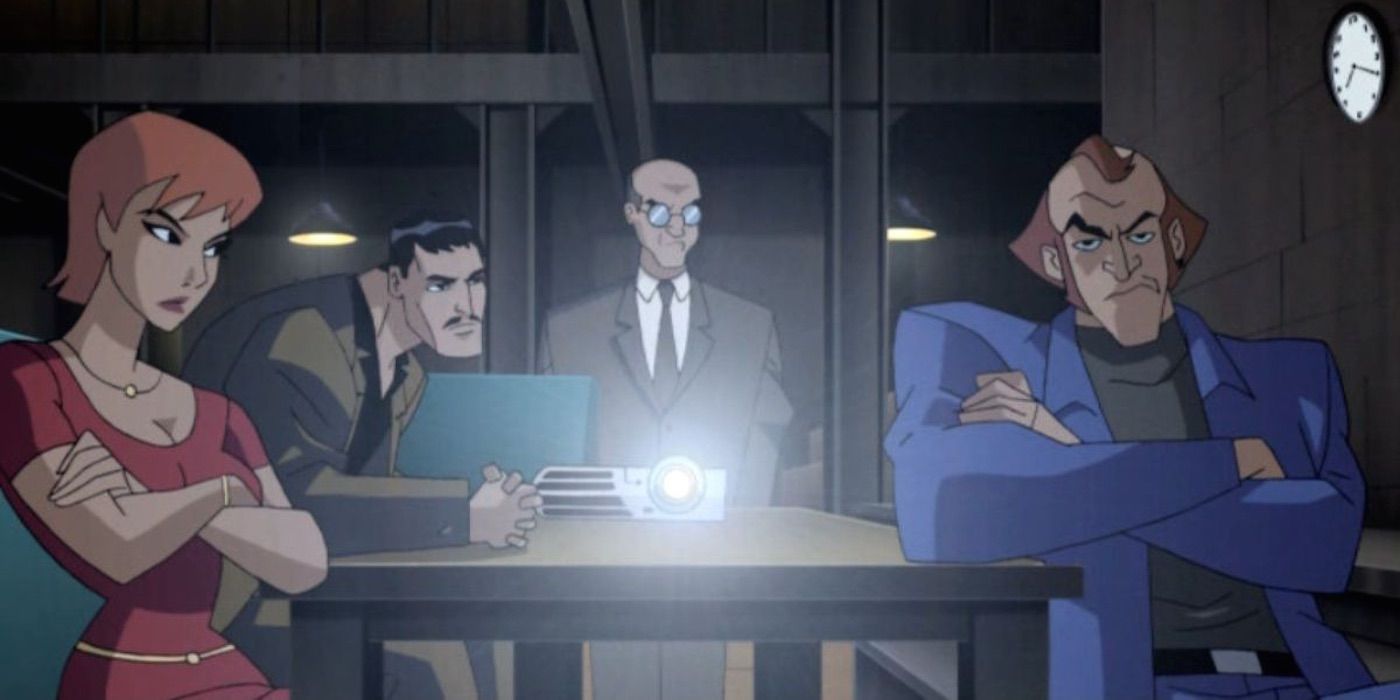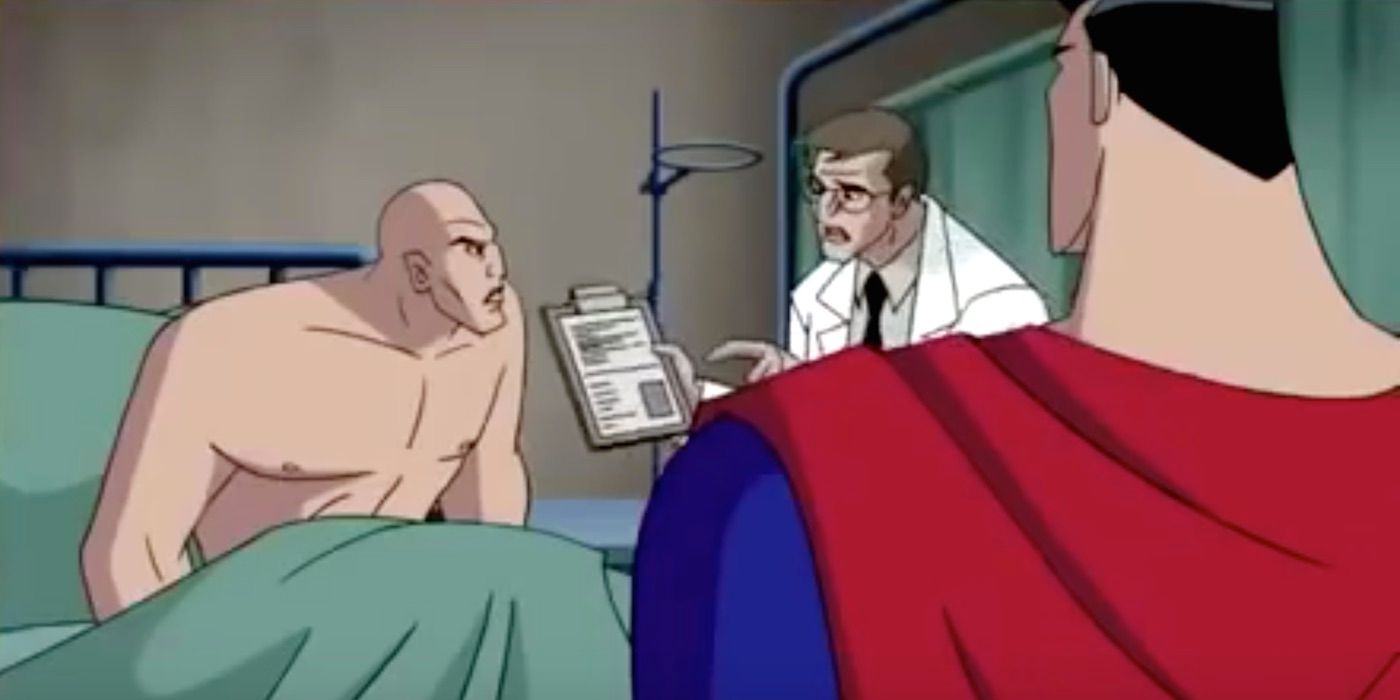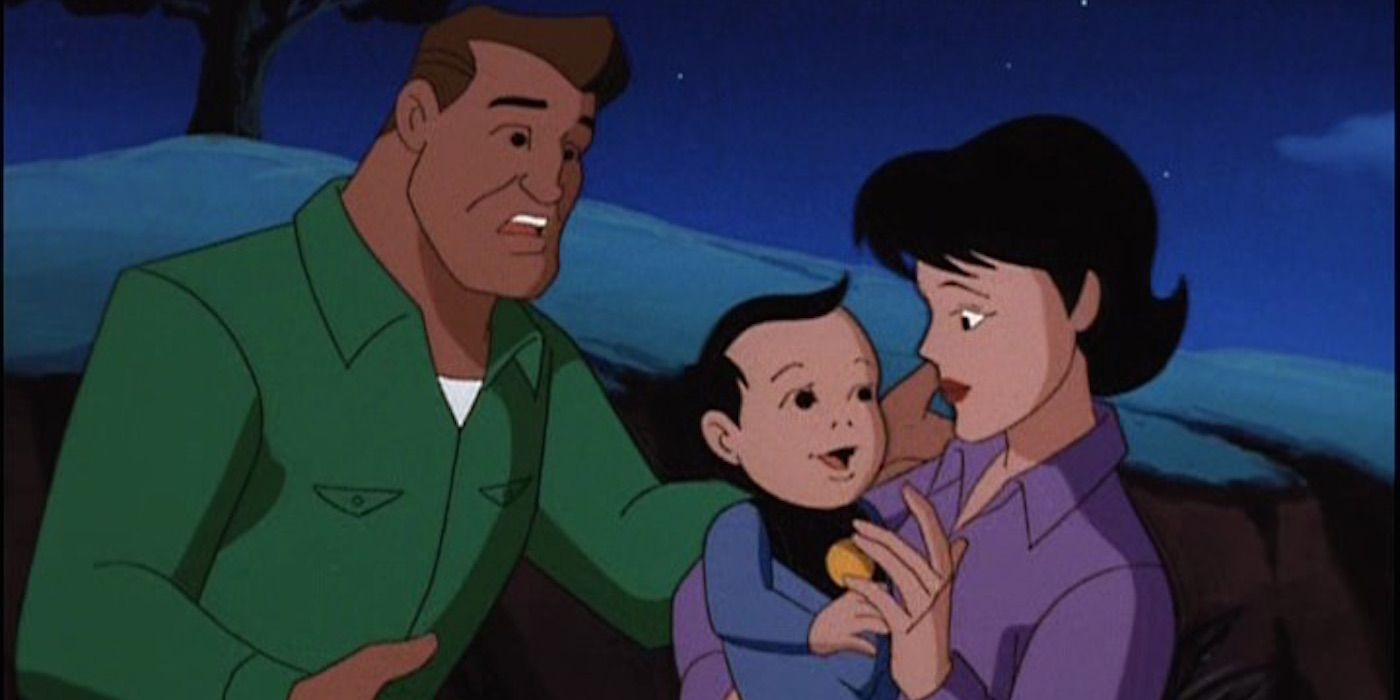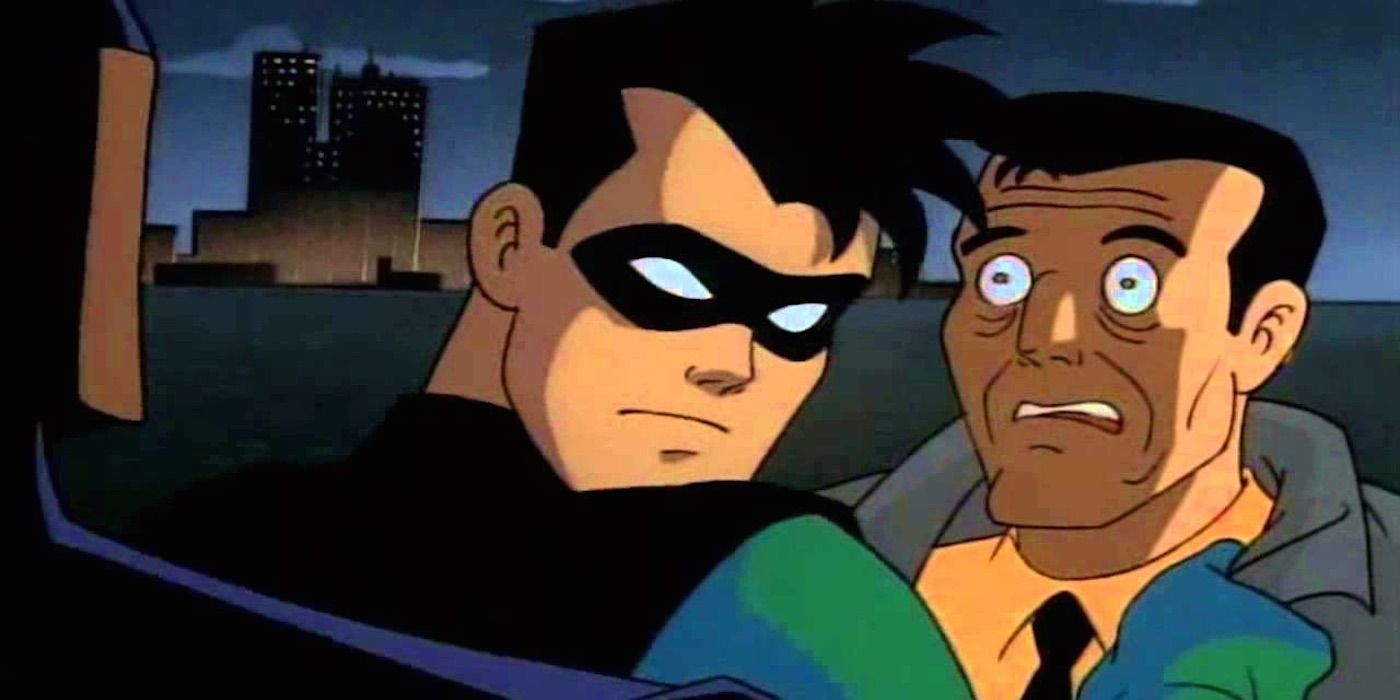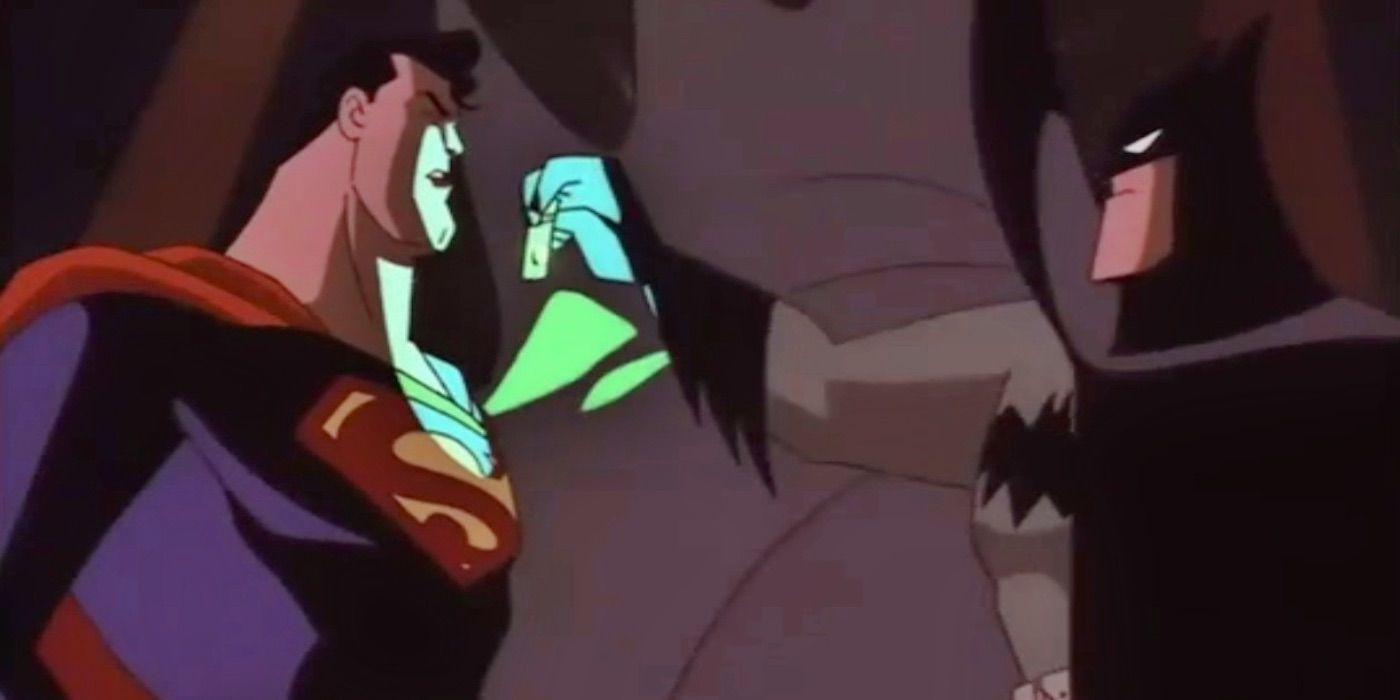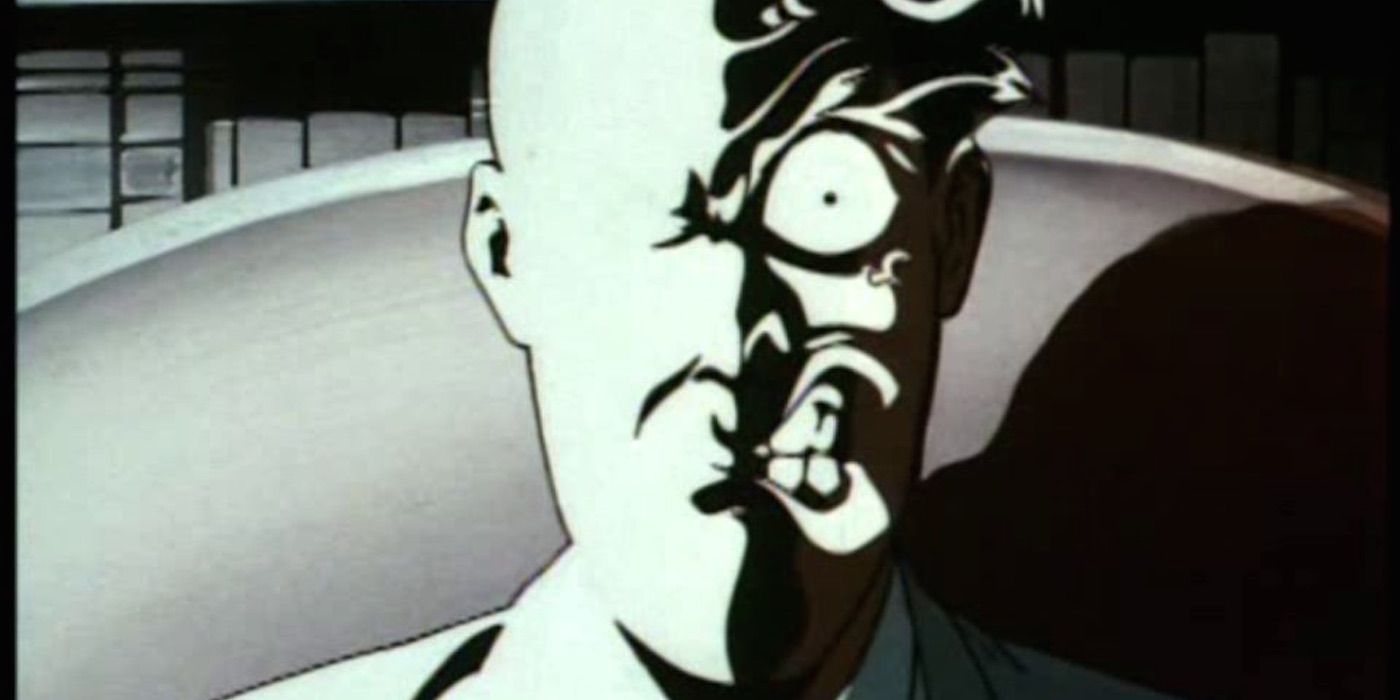Over the decades, DC movies have struggled to find the same box office enthusiasm as Marvel. Part of the issue is that DC has trouble bringing its comics to the screen without changing them. "The Dark Knight Trilogy" was a huge success, but it took Batman out of a comic book world for a more realistic setting. Gone were the colorful costumes and eccentric villains.
RELATED: Justice League Dark: 15 Ways It Will Change The DCAU
While fans might argue over the quality of the movies, it seems like almost everyone can agree that the DC Animated Universe (DCAU) was great. Beginning with "Batman: The Animated Series" in 1992, and continuing all the way up to "Justice League Unlimited" in 2006, these cartoons captivated kids and adults at the same time. Here are 15 times that the DCAU was better than the DC movies.
15 IN BRIGHTEST DAY
Warner Brothers' 2011 "Green Lantern" didn't connect with fans in the way the studio was hoping. There were many complaints about the overuse of CGI, the confusing and overstuffed plot, and too many villains. Ryan Reynolds starred as Hal Jordan, a hotshot pilot who is drafted into the Green Lantern Corps because he can overcome fear. Jordan must deal with training to be a lantern under Sinestro, while also stopping the psychic Hector Hammond, on top of preventing Parallax from destroying the Earth.
Green Lantern's origin was adapted into an episode of "Superman: The Animated Series," titled "In Brightest Day" (1999). Here, Kyle Rayner, an artist for the Daily Planet, gets the ring, although his origin and design are based on Hal Jordan's. The story is much simpler, with Rayner obtaining the ring and then having to learn to use his powers while Sinestro tries to destroy him and the ring. Superman is there to protect Rayner, and the episode does a much better job of introducing the Green Lantern mythos in 22 minutes than the movie did in almost two hours.
14 THE DOOMSDAY SANCTION
Doomsday is notorious for killing Superman in "Superman" #75 (1993) by Dan Jurgens, and for being shoehorned into the last act of "Batman V Superman: Dawn of Justice" (2016). Created when Lex Luthor combines his blood with General Zod's body in a Kryptonian genesis chamber, Doomsday shows up for a quick fight that rushes through the death of Superman arc, killing off the beast only a few scenes after he's introduced.
Doomsday is treated with more respect in the "Justice League" cartoon, especially in the episode "The Doomsday Sanction" (2005). Here it is revealed that Doomsday is actually a failed clone of Superman, created by Project CADMUS, in an attempt to create a weapon to use against meta humans. Doomsday breaks out, and chases after Superman, as he was programmed to do. While Superman doesn't die in this story and his origins are drastically changed from the comics, Doomsday gives him a run for his money in a hugely entertaining fracas. After trapping the monster in lava, Superman tries to reason with him, to which Doomsday coldly responds that he'll get free and continue trying to kill Superman, no matter what.
13 MAD LOVE
The most noteworthy addition to the Batman mythology from "Batman: The Animated Series" was definitely Harley Quinn. She made her big screen debut in "Suicide Squad" (2016), where she's depicted as the Joker's insane girlfriend. In the film, her origin shows her as a therapist in Arkham Asylum, who escapes and is then forcibly given electric shock treatment by the Joker. He then gives her the same chemical bath that turned him into the Clown Prince of Crime.
Harley's cartoon origin was first explored in the episode "Mad Love" (1999), which was adapted into a comic within the show's tie-in series. This shows a similar origin as the movie, although it dives deeper into Harley's relationship with the Joker. As she tries to treat him after each arrest, she begins to see him as a victim. He's actually manipulating her into helping him, but she was genuinely falling in love. This version of the story is much more tragic, painting Harley as a sad, conflicted character caught in an abusive relationship.
12 HEART OF ICE
One of the most unforgivable casting mistakes ever committed was hiring Arnold Schwarzenegger to play Mr Freeze in "Batman and Robin" (1997). His Mr Freeze was a former scientist/Olympic athlete who was caught in an accident while experimenting on his cryogenically frozen wife. He has to wear a special suit to keep his body at sub zero temperatures, which also powers his freeze gun. He also loves ice themed puns and apparently makes his henchmen sing and dance while hanging out in his hideout.
This characterization was actually based on the Emmy award winning "Heart of Ice" (1992), from "Batman: The Animated Series." Surprisingly less cartoony than the live action version, Victor Freeze is seeking revenge for the death of his cryogenically frozen, terminally ill wife, caused during the same accident that turned him cold. This Freeze has no time for jokes, and is too grief stricken to feel emotions anymore. His skin is frozen, but his heart is ice.
11 AMANDA WALLER
Throughout "Justice League Unlimited," Amanda Waller appears as the head of the secretive Project Cadmus. After an incident involving the evil version of the Justice League, known as the Justice Lords, Waller didn't trust any of the metahumans. Cadmus was dedicated to coming up with ways of keeping them in line, including the creation of Doomsday. This version of Waller, although not super powered in anyway, was one of the most intimidating characters on the show, and even stood up to Batman.
She was even responsible for the birth of Terry McGinnis, who turned out to be a the genetic son of Bruce Wayne. Waller manipulated the events leading up to his birth, and even attempted to have his parents killed, just so she could replicate Batman. Her appearance in "Green Lantern" (2011), however, was less impressive, where she appears as a scientist working for the government. "Suicide Squad" (2016) introduced a revamped version of Waller, although her inability to control the Enchantress, despite having her heart, made her look a lot less intimidating.
10 ON LEATHER WINGS
While Christopher Nolan's "Dark Knight Trilogy" is generally beloved by fans, Christian Bale's Batman voice is one of the few missteps that irked audiences. Whenever Bale put on the cape and cowl, he stopped talking like a normal person and growled like an angry animal. One of the most over-the-top moments in the entire trilogy is in "Batman Begins" (2005) when Batman intimidates a crook cop by dangling him upside down and growling gravelly in his face.
Kevin Conroy voiced Batman in "Batman: The Animated Series" and found the best balance between Bruce Wayne's voice and Batman's. The best example of this is shown in the episode "On Leather Wings" (1992). While investigating Man Bat, Batman makes a phone call to a bat expert as Bruce Wayne. Within the same scene, Conroy switches between Batman and Bruce Wayne, who sound almost like two completely different people. Bruce is higher toned and more playful, while Batman is deep and serious. It's much more impressive than growling.
9 OFF BALANCE
"Batman Begins" (2005) introduced a modernized take on Ra's al Ghul, focusing on his leadership of the League of Shadows and ignoring his life restoring Lazarus Pits. His daughter, Talia, was introduced in "The Dark Knight Rises" (2012) with less success. After meeting Bruce Wayne under the guise of Miranda Tate, Talia seduces him and secretly helps orchestrate his downfall, along with Gotham's. The relationship, however, was brief and Batman seemed to have much more chemistry with Catwoman. When Talia betrays him at the end, the moment isn't as shocking or heartbreaking as it's meant to be.
"Off Balance" (1992) also shows Batman meeting Talia while they're both chasing after the villainous Count Vertigo. They work well together and seem to have a real connection, and Batman slowly begins to trust her. Ultimately, she's only chasing Vertigo to retrieve the villain's weapon for her father. She betrays Batman and steals the weapon for herself. When she tests it, however, it turns out Batman booby trapped it. Batman knew Talia better than she realized.
8 SECRET ORIGINS
While "Justice League" (2017) hasn't been released yet, the ending of "Batman V Superman" (2016) made it clear what brings the heroes together. Batman and Wonder Woman join Superman to fight Doomsday, and based on Batman's vision of a possible future, they believe that there are greater threats coming and they'll need to band together. Also, while Bruce's vision may have just been a dream, Lex Luthor also revealed he may have made contact with something from space and whatever it is that is coming. Basically, there's a vague possibility of a threat.
The animated Justice League is brought together in "Secret Origins" (2001), the first episode of the series. When Batman and Superman discover a group of shape shifting aliens plotting to take over the Earth, they rescue Martian Manhunter and team up with the Flash, Hawkgirl, Green Lantern and Wonder Woman. Once the aliens are defeated, the heroes decide to keep working together, having naturally bonded in battle.
7 BANE
Tom Hardy's Bane was an unusual take on the character. He had a vague backstory about being a mercenary, who was vaguely wounded and needed to wear a mask, and he had an accent that didn't really tie him to any location. For the majority of "The Dark Knight Rises" (2013), Bane appears to be a ruthless mastermind, hellbent on not just destroying Gotham, but erasing all hope from the city. While he does break Batman, the finale reveals that Bane was just Talia al Ghul's pawn, and he's ultimately killed by Catwoman, as opposed to be truly defeated by Batman. The less said about the Bane in "Batman and Robin," the better.
"Batman: The Animated Series" introduced Bane in an episode appropriately titled "Bane" (1994). Here, the villain is a Cuban assassin who uses a drug called venom to enhance his strength. He's hired by Rupert Thorne to kill Batman, and at first seems like he might be the caped crusader's match. After beating Batman down, however, Bane loses when Batman outsmarts him and takes advantage of his dependence on Venom. Bane's defeat is much more meaningful, while still leaving his character intact. Nothing onscreen has yet matched Bane's characterization in the comics, but at least the animated series came close.
6 TASK FORCE X (SUICIDE SQUAD)
Amanda Waller's covert strike force was unveiled in the "Justice League Unlimited" episode "Task Force X" (2005). The team was comprised of criminals who, if they completed five years of service on the team, would be granted pardons. Waller assigns the team to infiltrate the Watchtower, the home base of the Justice League, to steal a weapon known as the Annihilator. Working together, the team is able to sneak aboard, steal the weapon and then fight their way out. It's pretty darn great.
In the film "Suicide Squad" (2016), however, Task Force X is deployed to take down the Enchantress, who has attacked Midway City. The biggest flaw in the movie is that the majority of Task Force X is never fully utilized (or realized, really). Characters like Boomerang and Kitana are useful in a fight, but that's about it; two examples in a list of many missed opportunities in the movie. Many members of the team could have been replaced with any random brawler and gotten the same results.
5 INJUSTICE FOR ALL
No matter what Superman did, he just couldn't bring Lex Luthor down. That is, until the Justice League got involved. In "Injustice for All" (2002), Luthor is finally caught when Martian Manhunter poses as Superman and gets Lex to reveal his evil, while Batman and Green Lantern record the conversation. While that's only the beginning of this particular episode, it proves how worthy an opponent Lex Luthor was. After years of causing trouble, he's only caught when some of the Earth's most powerful heroes team up.
This makes his downfall in "Batman V Superman: Dawn of Justice" (2016) even more embarrassing. After tricking the titular heroes into fighting each other, Lex unleashes the Doomsday monster, only for it to be defeated. He's immediately arrested, and ends the movie in a prison cell after having his hair forcibly shaved off. The worst part is that the world's smartest supervillain's plan was foiled because he didn't realize that Batman and Superman both have mom's named Martha. Rookie error, Lex.
4 THE LAST SON OF KRYPTON, PART 2
One of the biggest criticisms leveled against "Man of Steel" (2013) was Kevin Costner's portrayal of Jonathan Kent. As a young Clark slowly realizes his powers, Jonathan comes across as an almost negative influence. He even suggests at one point that it might be better for Clark to have let a school bus full of kids drown than to expose his powers to the public. He's clearly protective of the boy, but his worldview is incredibly dark and depressing; hardly the bastion of hope who inspires his adoptive son.
The second episode of "Superman: The Animated Series," named "The Last Son of Krypton, Part 2" (1996), also deals with this time in Clark's life. As his powers manifest and Clark begins to realize that he's different, Jonathan Kent comes across as more nurturing and -- get this -- fatherly. He never yells at Clark for saving anybody, and when Clark flies for the first time, Jonathan greets him with a smile as opposed to a stern lecture telling him to hide his powers all the time.
3 ROBIN'S RECKONING
Based on the realistic tone, it seemed unlikely that Robin would ever appear in Christopher Nolan's "Dark Knight Trilogy." In "The Dark Knight Rises" (2012), however, Batman's sidekick made an appearance, of sorts. Police officer John Blake figures out that Bruce Wayne is Batman, and spends the movie helping him. At the end of the movie, a seemingly dead Bruce Wayne leaves Blake his Batman gear and cave, and it's revealed that Blake's real name is Robin.
"Batman: The Animated Series" also revamped Robin's origin in the episode "Robin's Reckoning" (1993). When Robin gets a lead on the gangster that killed his family, he goes on a manhunt. Batman tries to keep Robin from going down a dark path, and flashbacks reveal how Dick Grayson came under Bruce's care and became Robin. The story dives deep into Batman and Robin's relationship, and while it's still farfetched that a grown man would bring a kid with him to fight crime, "Robin's Reckoning" makes Robin's pain and quest for vengeance seem real, along with his friendship with Batman.
2 WORLD'S FINEST, PART 1
In "Batman V Superman: Dawn of Justice" (2016), Batman doesn't trust Superman due to his extreme power levels and alien nature, and Superman wants to end Batman's brutal vigilantism. With some prodding by Lex Luthor, the two icons face off in an epic, abandoned building-destroying fight that ends with a whimper when Superman reveals that they both have mothers named Martha. They then realize that Luthor manipulated them into fighting and team up.
The pair's first meeting in the DC Animated Universe happened in the "Superman Animated Series" episode "World's Finest." When Joker gets his hands on some Kryptonite, he travels to Metropolis to help Lex Luthor kill Superman. Batman follows, and immediately clashes with Superman's personality. After a brief altercation, Superman uses his X-ray vision to see under Batman's mask. Thinking he has the upper hand, Superman tells Batman to leave Metropolis. He then returns home only to find a tiny bat-tracer on his cape. Batman waves from a nearby rooftop, having outsmarted Superman and learning his secret identity as well. Of course the two later team up, but it was how they got the measure of each other that far out-shined their movie outing.
1 TWO-FACE
Harvey Dent was the hero Gotham needed, until half his face got burned off in "The Dark Knight" (2008). He briefly becomes Two-Face, before being accidentally killed when he threatens Commissioner Gordon's family and Batman intervenes. While it has a big impact on the plot, Two-Face's story is actually relatively brief. Also, he never becomes a crook, as his main motivation is only to seek revenge on the crooked cops and gangsters who killed his fiancé.
His story is given more detail in "Two-Face" (1992) from "Batman: The Animated Series." Here, Harvey has always struggled with an aggressive split personality, caused by his anger issues. When the mob causes half his face to be disfigured in an explosion, Harvey lets the angry personality take over. He also becomes dependent on his coin for every decision, where the movie version only uses it to decide who to kill. Batman actually beats Two-Face by throwing a pile of coins at him during one of his coin flips, confusing him and crippling his decision making process, as opposed to "The Dark Knight," where Batman just tackles Two-Face off a building.
Do you agree? Are the cartoons better than the live-action movies? Let us know in the comments!
DC's next film, "Wonder Woman," will be released on June 2, 2017

